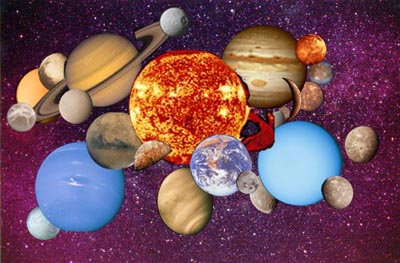Map generators like Mapquest and Yahoo! Maps have bailed me out quite a few times, helping me get where I needed to go. So imagine in the future, navigating on other bodies in our solar system and having the ability to find landmarks and destinations to point you in the right direction. This type of technology is now under development and could create three-dimensional “super roadmaps†of other planets and moons. In addition it could also provide robots, astronauts and engineers details about atmospheric composition, biohazards, wind speed and temperature, and could help land future spacecraft and more effectively navigate roving cameras across a Martian or lunar terrain.
The Rochester Institute of Technology’s Rochester Imaging Detector Laboratory (RIDL), in collaboration with Massachusetts Institute of Technology’s Lincoln Laboratory are developing a new type of detector that uses LIDAR (LIght Detection and Ranging), a technique similar to radar, but which uses light instead of radio waves to measure distances.
This is a new generation of high resolution, low power consuming optical/ultraviolet imaging LIDAR detectors that will significantly extend NASA’s science capabilities for planetary applications by providing 3-D location information for planetary surfaces and a wider range of coverage than the single-pixel detectors currently combined with LIDAR.
The LIDAR imaging detector will be able to distinguish topographical details that differ in height by as little as one centimeter.
“The imaging LIDAR detector could become a workhorse for a wide range of NASA missions,” says Donald Figer, director of the RIDL. “You can have your pixel correspond to a few feet by a few feet spatial resolution instead of kilometer by kilometer,” Figer says. “And now you can take LIDAR pictures at fine resolutions and build up a map in hours instead of taking years at comparable resolution with a single image.”
The device will consist of a 2-D continuous array of light sensing elements connected to high-speed circuits. The $547,000 NASA-funded program also includes a potential $589,000 phase for fabrication and testing.
LIDAR works by measuring the time it takes for light to travel from a laser beam to an object and back into a light detector. The new detector can be used to measure distance, speed and rotation. It will provide high-spatial resolution topography as well as measurements of planetary atmospheric properties: pressure, temperature, chemical composition and ground-layer properties. The device can also be used to probe the environments of comets, asteroids and moons to determine composition, physical processes and chemical variability.
The imaging LIDAR detector will be tested at RIDL in environments that mimic aspects of operations in NASA space missions.
Orginal News Source: EurekAlert


I thought they were already doing this with current probes. has LIDAR technology sufficiently progressed to make this practical?
We can see only light and lighted objects. We can see nothing in the darkness. A thing may how much bigger if it goes away to away from our eye views, the thing appears us smaller to smaller and at last it will disappear from our eye views. The sun is the only object who gives light the entire solar system. In size it is 3 lakhs time bigger than earth but we look it like a football size. From calculation we know that sun is about150 millions Kilometer away from the earth. So we can find earthlike object at same distance must be disappeared. Since we are created from earth, the eyes power of us has merged with the earth. Since the earthlike object disappears at distance of 150 million Kilometer, the eye powers see anything ahead of it, is zero.
Therefore we are only capable to see original space objects within the radius of area of 150 million kilometer of solar system from us. Next we are covered by two mirrors. One is on point of sun another is on the point of earth’ shadow. Each mirror reflects reversely about 75 million kilometer meets another mirror as result unlimited reflection occurred in both side and we find very deep space on the side of darken earth and find sun spots on sun.
Visit: – http://www.spacemirrormystery.com and know the real position of solar system.